#margaret of burgundy queen of france
Explore tagged Tumblr posts
Text
MARGARET OF BURGUNDY
MARGARET OF BURGUNDY, QUEEN OF FRANCE
c.1290-1315
Les Rois Maudits (The Accursed Kings)
Margaret of Burgundy was the Queen of France and Navarre, and was the first wife of King Louis X and I. She was a princess of the House of Burgundy, the oldest daughter of Robert II Duke of Burgundy an Anges of France (who was the youngest daughter of Louis IX of France). In 1305, Margaret married her cousin Louis I and had their daughter Joan.
In 1314, the Tour de Nesle affair was revealed, it was a well-known scandal for the French royal family. The daughters-in-law of King Philip IV, Margaret, Blanche, and Joan were all accused of adultery. The three women were said to have conducted their affairs with Norman knights in a tower in Paris.
It was Isabella of France (wife of King Edward II of England) who became a witness against those involved in the affair. Isabella had given her sisters-in-law a purse, the Norman knights were found in possession of them after the three ladies had given it to them as a gift The affair was exposed and the knights were tortured and then executed.
Margaret, Blanche, and Joan were found guilty and imprisoned. Margaret spent the last two years of her life in prison. The women were imprisoned in poor conditions and mistreated, which resulted Margaret catching a virus and passing away. She died aged 24 or 25. Joan’s paternity became in doubt after the affair.
Margaret of Burgundy is one of the characters in Les Rois Maudits (The Accursed Kings) by Maurice Druon and was portrayed in the miniseries 1972 and 2005.

#margaretofburgundyqueenoffrance #margaretofburgundy #lesroismaudits #theaccursedkings #mauricedruon
#margaret of burgundy queen of france#margaret of burgundy#margaretofburgundy#les rois maudits#the accursed kings#maurice druon
3 notes
·
View notes
Text

Mary (1505–1558), Queen of Hungary
Artist: Copy after Jan Cornelisz Vermeyen (Dutch, c. 1504–1559)
Date: 1500's
Medium: Oil on wood
Collection: Metropolitan Museum of Art, New York City, NY, United States
Mary of Hungary (Governor of The Netherlands)
Mary of Austria (15 September 1505 – 18 October 1558), also known as Mary of Hungary, was Queen of Hungary and Bohemia as the wife of King Louis II, and was later governor of the Habsburg Netherlands.
The daughter of Queen Joanna and King Philip I of Castile, Mary married King Louis II of Hungary and Bohemia in 1515. Their marriage was happy but short and childless. Upon her husband's death following the Battle of Mohács in 1526, Queen Mary governed Hungary as regent in the name of the new king, her brother, Ferdinand I.
Following the death of their aunt Margaret in 1530, Mary was asked by her eldest brother, Charles V, Holy Roman Emperor, to assume the governance of the Netherlands and guardianship over their nieces, Dorothea and Christina of Denmark. As governor of the Netherlands, Mary faced riots and a difficult relationship with the Emperor. Throughout her tenure she continuously attempted to ensure peace between the Emperor and the King of France. Although she never enjoyed governing and asked for permission to resign several times, the Queen succeeded in creating a unity between the provinces, securing for them a measure of independence from both France and the Holy Roman Empire[1] as well as in creating of a permanent navy for Netherlands alongside Maximilian of Burgundy and Cornelis de Schepper. After her final resignation, the very frail Queen moved to Castile, where she died.
#portrait#queen of hungary#mary of hungary#mary of austria#queen consort of hungary and bohemia#governor of the habsburg netherlands#jan cornelisz vermeyen#dutch painter#european art#16th century painting#oil on wood
7 notes
·
View notes
Note
Now that the Histories Ficathon is over I'm making good on my threat/promise... please assign the Lancasterlings (and their spouses, if you want) a prehistoric creature to go alongside Thomasaurus Rex.
yes...haha yes! 😈
this got long so under the cut:
Henry V:
Okay hear me out- we keep keep the swan theme and connection to Mary and her family as strong, tight throughline also I love the idea of Hal beating up people aggressive-swan-style. But- hear me out- bigger. So I'm thinking the giant Pleistocene swan Cygnus falconeri. It's a beautiful morning in France, and you are a horrible swan.
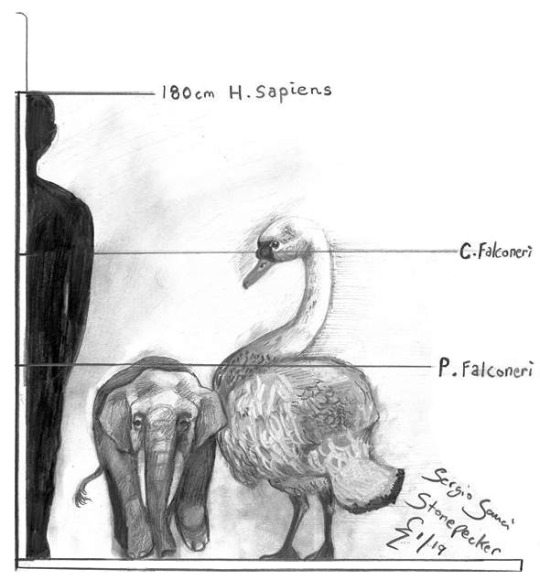
Artist: Sergio Gauci
Given Henry VI may have gotten his panther badge from his mom, may I also propose for Catherine de Valois the Eurasian extinct giant cheetah species Acinonyx pardinensis?

Artist: Velizar Simeonovski
Thomas, Duke of Clarence:
Obviously a T. rex, but I'm gonna stick this bit in from Brusatte's The Rise and Fall of the Dinosaurs to show how perfect that choice is 🤌✨

I admittedly know very little about Margaret Holland, but I was kind of compelled by how her children from her first marriage were kept in her and Thomas' household...that and Margaret wanting her book of hours to prepare her to "always be redy to dye," reminds me of the oviraptorid fossil that died and was preserved in position of protecting its eggs. Something about that as a parallel to her being buried alongside both her husbands too....

Artist: Zhao Chuang
John, Duke of Bedford:
Maybe it's because he himself seemed constantly stressed and running around doing some sort of assignment, and in the plays it's sometimes played as if he dies from sheer exhaustion, but I kind of like the idea of a beardog like Ischyrocyon or Amphicyon. The beardogs were famously generalists in hunting and in both of the above genera, it's hypothesized they may have been persistence hunters.
youtube
Also voting for Anne of Burgundy as an alvarezsauroid like Mononykus or Shuvuuia, which have been compared to nocturnal avian hunters like owls 🤎🤍

Humphrey, Duke of Gloucester:
So a guy having a pretty productive relationship to his family (not perfect, but pretty good compared to others I could name...) trying his best to be an actual protector of his relative's kid, having a lot of relationship drama, and also getting into spats with people reads as very ceratopsian to me lmao. To de-fang him a just a little, I'm going with Kosmoceratops. Those folded horns on the top edge of the frill and side-facing brow horns probably aren't going to help you that much at Agincourt, but I'm sure that pretty lady from Cobham thinks they're fire 👍

Artist: Lukas Panzarin
Speaking of: I like the idea of Eleanor of Cobham maybe being assigned with some sort of plesiosaur? Sort of bridging the siren to mermaid to modern creature of our mythical imagination Nessie pipeline :)

Artist: James Kuether
For Jacoba, Smilodon. They're smart and fierce so fitting. Also what she deserves ❤️🔥

Artist: Mehdi Nikbakhsh
Blanche:
Unfortunately I couldn't find a whole lot on her, but that sort of elusive energy kind of reminds me of Coelurus fragilis, a possible Jurassic relative of the tyrannosaurs, but not much is known about their evolution or ecology. That and it being a more gracile and swift-footed creature kind of has Blanche vibes to me 🤍

Artist: Nobu Tamura
Ludwig deserves nothing and gets nothing bye
Philippa, Queen of Denmark, Sweden, and Norway:
I know in the fic poor Philippa seems pretty freaked out by Thomasaurus' size, but I'm partial to her being a big death lizard too– maybe like those coming-of-age mermaid stories but she's...bigger and teeth-ier 😅. For a similar reason to seeing what Thomas would do at Baugé, I'd like to see Philippa defend Copenhagen as a Mosasaurus hoffmannii. Let's see the Hanseatic League try to get past THIS 🫡 min dronning 🫡

I like the idea of Erik also being associated with something aquatic though maybe not as intimidating as Philippa...maybe an early whale relative like Dorudon?

Artist: David Arruda Mourao
7 notes
·
View notes
Text
Wives and Daughters of Holy Roman Emperors: Age at First Marriage
I have only included women whose birth dates and dates of marriage are known within at least 1-2 years, therefore, this is not a comprehensive list.
This list does not include women who died before their husbands were crowned Emperor. It spans between the beginning of the reign of Otto I (962 CE) and the end of the reign of Francis II (1806 CE).
The average age at first marriage among these women was 17. The sample size was 91 women. The youngest bride, Bianca Maria Sforza, was just 2 years old when she wed her first husband, who was himself 9. The oldest bride, Constance of Sicily, was 32 years old.
Adelaide of Italy, wife of Otto I, HRE: age 15 when she married Lothair II, King of Italy, in 947 CE
Liutgarde of Saxony, daughter of Otto I, HRE: age 15 when she married Conrad the Red, Duke of Lorraine, in 947 CE
Theophanu, wife of Otto II, HRE: age 17 when she married Otto in 972 CE
Cunigunde of Luxembourg, wife of Henry II, HRE: age 24 when she married Henry in 999 CE
Gisela of Swabia, wife of Conrad II, HRE: age 12 when she married Brun I of Brunswick in 1002 CE
Agnes of Poitou, wife of Henry III, HRE: age 18 when she married Henry in 1043 CE
Matilda of Germany, daughter of Henry III, HRE: age 11 when she married Rudolf of Rheinfelden in 1059 CE
Judith of Swabia, daughter of Henry III, HRE: age 9 when she married Solomon, King of Hungary in 1063 CE
Bertha of Savoy, wife of Henry IV, HRE: age 15 when she married Henry in 1066 CE
Agnes of Waiblingen, daughter of Henry IV, HRE: age 14 when she married Frederick I, Duke of Swabia in 1086 CE
Empress Matilda, wife of Henry V, HRE: age 12 when she married Henry in 1114 CE
Beatrice I, Countess of Burgundy, wife of Frederick I, HRE: age 13 when she married Frederick in 1156 CE
Beatrice, daughter of Frederick I, HRE: age 10 when she married Guillaume II, Count of Chalon in 1173 CE
Constance, Queen of Sicily, wife of Henry IV, HRE: age 32 when she married Henry IV in 1186 CE
Beatrice of Swabia, first wife of Otto IV, HRE: age 14 when she married Otto in 1212 CE
Maria of Brabant, second wife of Otto IV, HRE: age 24 when she married Otto in 1214 CE
Constance of Aragon, first wife of Frederick II, HRE: age 19 when she married Emeric of Hungary in 1198 CE
Isabella II of Jerusalem, second wife of Frederick II, HRE: age 13 when she married Frederick in 1225 CE
Isabella of England, third wife of Frederick II, HRE: age 21 when she married Frederick in 1235 CE
Margaret of Sicily, daughter of Frederick II, HRE: age 14 when she married Albert II, Margrave of Meissen in 1255 CE
Anna of Hohenstaufen, daughter of Frederick II, HRE: age 14 when she married John III Doukas Vatatzes in 1244 CE
Marie of Luxembourg, daughter of Henry VII, HRE: age 18 when she married Charles IV of France in 1322 CE
Beatrice of Luxembourg, daughter of Henry VII, HRE: age 13 when she married Charles I of Hungary in 1318 CE
Margaret II, Countess of Hainaut, wife of Louis IV, HRE: age 13 when she married Louis in 1324 CE
Matilda of Bavaria, daughter of Louis IV, HRE: age 10 when she married Frederick II, Margrave of Meissen in 1323 CE
Beatrice of Bavaria, daughter of Louis IV, HRE: age 12 when she married Eric XII of Sweden in 1356 CE
Anna von Schweidnitz, wife of Charles IV, HRE: age 14 when she married Charles in 1353 CE
Elizabeth of Pomerania, wife of Charles IV, HRE: age 16 when she married Charles in 1378 CE
Margaret of Bohemia, daughter of Charles IV, HRE: age 7 when she married Louis I of Hungary in 1342 CE
Catherine of Bohemia, daughter of Charles IV, HRE: age 14 when she married Rudolf IV, Duke of Austria in 1356 CE
Elisabeth of Bohemia, daughter of Charles IV, HRE: age 8 when she married Albert III, Duke of Austria in 1366 CE
Anne of Bohemia, daughter of Charles IV, HRE: age 16 when she married Richard II of England in 1382 CE
Margaret of Bohemia, daughter of Charles IV, HRE: age 8 when she married John III, Burgrave of Nuremburg in 1381 CE
Barbara of Cilli, wife of Sigismund, HRE: age 13 when she married Sigismund in 1405 CE
Elizabeth of Luxembourg, daughter of Sigismund, HRE: age 13 when she married Albert II of Germany in 1422 CE
Eleanor of Portugal, wife of Frederick III, HRE: age 18 when she married Frederick in 1452 CE
Kunigunde of Austria, daughter of Frederick III, HRE: age 22 when she married Albert IV, Duke of Bavaria in 1487 CE
Bianca Maria Sforza, wife of Maximilian I, HRE: age 2 when she married Philibert I, Duke of Savoy in 1474 CE
Margaret of Austria, daughter of Maximilian I, HRE: age 17 when she married John, Prince of Asturias in 1497 CE
Barbara von Rattal, daughter of Maximilian I, HRE: age 15 when she married Siegmund von Dietrichstein in 1515 CE
Dorothea of Austria, daughter of Maximilian I, HRE: age 22 when she married Johan I of East Frisia in 1538 CE
Isabella of Portugal, wife of Charles V, HRE: age 23 when she married Charles in 1526 CE
Maria of Austria, daughter of Charles V, HRE: age 20 when she married Maximilian II, HRE in 1548 CE
Joanna of Austria, daughter of Charles V, HRE: age 17 when she married John Manuel, Prince of Portugal in 1552 CE
Margaret of Parma, daughter of Charles V, HRE: age 14 when she married Alessandro de’ Medici, Duke of Florence, in 1536 CE
Elizabeth of Austria, daughter of Ferdinand I, HRE: age 16 when she married Sigismund II Augustus of Poland in 1543 CE
Anna of Austria, daughter of Ferdinand I, HRE: age 17 when she married Albert V, Duke of Bavaria in 1546 CE
Maria of Austria, daughter of Ferdinand I, HRE: age 15 when she married William of Julich-Cleves-Berg in 1546 CE
Catherine of Austria, daughter of Ferdinand I, HRE: age 16 when she married Francesco III Gonzaga in 1559 CE
Eleanor of Austria, daughter of Ferdinand I, HRE: age 27 when she married William I, Duke of Mantua in 1561 CE
Barbara of Austria, daughter of Ferdinand I, HRE: age 26 when she married Alfonso II d’Este in 1565 CE
Joanna of Austria, daughter of Ferdinand I, HRE: age 18 when she married Francesco I de’ Medici in 1565 CE
Anna of Austria, daughter of Maximilian II, HRE: age 21 when she married Philip II of Spain in 1570 CE
Elisabeth of Austria, daughter of Maximilian II, HRE: age 16 when she married Charles IX of France in 1570 CE
Anna of Tyrol, wife of Matthias, HRE: age 26 when she married Matthias in 1611 CE
Eleonora Gonzaga the Elder, wife of Ferdinand II, HRE: age 24 when she married Ferdinand in 1622 CE
Maria Anna of Austria, daughter of Ferdinand II, HRE: age 25 when she married Maximilian I, Elector of Bavaria in 1635 CE
Cecilia Renata of Austria, daughter of Ferdinand II, HRE: age 26 when she married Władysław IV of Poland in 1637 CE
Maria Anna of Spain, wife of Ferdinand III, HRE: age 25 when she married Ferdinand in 1631 CE
Maria Leopoldine of Austria, wife of Ferdinand III, HRE: age 16 when she married Ferdinand in 1648 CE
Eleonora Gonzaga the Younger, wife of Ferdinand III, HRE: age 21 when she married Ferdinand in 1651 CE
Mariana of Austria, daughter of Ferdinand III, HRE: age 15 when she married Philip IV of Spain in 1649 CE
Eleonore of Austria, daughter of Ferdinand III, HRE: age 17 when she married Michael I of Poland in 1670 CE
Maria Anna Josepha of Austria, daughter of Ferdinand III, HRE: age 24 when she married Johann Wilhelm II, Elector Palatine in 1678 CE
Margaret Theresa of Spain, wife of Leopold I, HRE: age 15 when she married Leopold in 1666 CE
Claudia Felicitas of Spain, wife of Leopold I, HRE: age 20 when she married Leopold in 1673 CE
Eleonore Magdalene of Neuberg, wife of Leopold I, HRE: age 21 when she married Leopold in 1676 CE
Maria Antonia of Austria, daughter of Leopold I, HRE: age 16 when she married Maximilian II Emanuel, Elector of Bavaria in 1685 CE
Maria Anna of Austria, daughter of Leopold I, HRE: age 25 when she married John V of Portugal in 1708 CE
Wilhelmine Amalie of Brunswick, wife of Joseph I, HRE: age 26 when she married Joseph in 1699 CE
Maria Josepha of Austria, daughter of Joseph I, HRE: age 20 when she married Augustus III of Poland in 1719 CE
Maria Amalia of Austria, daughter of Joseph I, HRE: age 21 when she married Charles VII, HRE in 1722 CE
Elisabeth Christine of Brunswick, wife of Charles VI, HRE: age 17 when she married Charles in 1708 CE
Maria Theresa of Austria, daughter of Charles VI, HRE: age 19 when she married Francis I, HRE in 1736 CE
Maria Anna of Austria, daughter of Charles VI, HRE: age 26 when she married Charles Alexander of Lorraine in 1744 CE
Maria Antonia of Bavaria, daughter of Charles VII, HRE: age 23 when she married Frederick Christian, Elector of Saxony in 1747 CE
Maria Anna Josepha of Bavaria, daughter of Charles VII, HRE: age 20 when she married Louis George of Baden-Baden in 1755 CE
Maria Josepha of Bavaria, daughter of Charles VII, HRE: age 26 when she married Joseph II, HRE in 1765 CE
Maria Christina, daughter of Francis I, HRE: age 24 when she married Albert Casimir, Duke of Teschen in 1766 CE
Maria Amalia, daughter of Francis I, HRE: age 23 when she married Ferdinand I, Duke of Parma in 1769 CE
Maria Carolina, daughter of Francis I, HRE: age 16 when she married Ferdinand IV & III of Sicily in 1768 CE
Maria Antonia, daughter of Francis I, HRE: age 14 when she married Louis XVI of France in 1770 CE
Maria Josepha of Bavaria, wife of Joseph II, HRE: age 26 when she married Joseph in 1765 CE
Maria Luisa of Spain, wife of Leopold II, HRE: age 19 when she married Leopold in 1764 CE
Maria Theresa of Austria, daughter of Leopold II, HRE: age 20 when she married Anthony of Saxony in 1787 CE
Maria Clementina of Austria, daughter of Leopold II, HRE: age 20 when she married Francis I of Sicily in 1797 CE
Maria Theresa of Naples, wife of Francis II, HRE: age 18 when she married Francis in 1790 CE
Marie Louise, daughter of Francis II, HRE: age 19 when she married Napoleon I of France in 1810 CE
Maria Leopoldina, daughter of Francis II, HRE: age 20 when she married Pedro I of Brazil and IV of Portugal in 1817 CE
Clementina, daughter of Francis II, HRE: age 18 when she married Leopold of Salerno in 1816 CE Marie Caroline, daughter of Francis II, HRE: age 18 when she married Frederick Augustus of Saxony in 1819 CE
34 notes
·
View notes
Note
Where there any ideological differences between the Lancastrians and Yorkists (both the families and their supports)?
The Wars of the Roses was largely a dynastic struggle over the throne and royal patronage, but there were roots in earlier political struggles during the reign of Henry VI between what we could call a "war party" faction and a "peace party" faction.
Broadly speaking, the "war party" faction was led by people like Richard Duke of York and Richard Neville, and they tended to favor a continuation of the Hundred Years War, an alliance with Burgundy, disapproval of the King's marriage and the Queen's overly-active role in government, more royal efforts to improve law and order, and a crackdown on rampant corruption and favoritism that saw royal land distributed to court favorites, sapping royal finances.
Broadly speaking, the "peace party" faction was led by Margaret d'Anjou and her favorites like Somerset and Stafford. They tended to favor an end to the Hundred Years War, an alliance with France, obviously they favored the king's marriage and the Queen's active role in government, and they generally blamed problems in royal government on York's rebellious factionalism and emphasized that the royal prerogatives ought not to be questioned.
However, a lot of that stuff fell by the wayside once the fighting started - England couldn't really fight a civil war and war with France at the same time, Suffolk was dead, and efforts to deal with law and order, corruption, and royal finances would all have to wait until the fighting died down after Towton, and then again after Tewkesbury.
52 notes
·
View notes
Note
Elizabeth Woodville seems to be very close to her Burgundy? They attended her coronation ceremony and Margaret's wedding in York. How many times did she receive them?
I wouldn't say that she was close with Burgundy, really. Considering they were not present in Elizabeth’s life prior to her becoming Queen of England neither the is mention of Jacquetta's post her marrying Richard Woodville any particular affinity with her relatives in Burgundy. There was a delegation at Elizabeth's coronation because Edward rightfully so wanted to show that his wife and future queen was not just a mere commoner - her mother was from the royal house of Luxemburg and had relations to royal house of Burgundy, and the fact that these relatives attended the coronation is because King of England invited them and not because they had any close relationship with Elizabeth.
The decision to marry Margaret to Charles the Bold was also a political one made by Edward. By marrying Elizabeth Edward undone a possible treaty and alliance with France ( by not marrying Bona of Savoy) plus when Warwick turned his back on Edward he went to France to conspire against Edward so Edward needed an alliance with France’s “frenemy” which was Burgundy at the time. A political decision that I wouldn’t think had anything to do with Elizabeth’s relatives through Jacquetta to Burgundy, though it was expressly stated that the queen (Elizabeth) championed this match. Both Anthiny Woodville and Richard Woodville took very active part in marrige negotiations.
In 1470 when Edward had to flee England he landed in Burgundy to gather support to conquer back his throne, though it is noted that “his welcome there was not initially as warm as he would have hoped.Duke Charles not greeting him or meeting him until Burgundian politics made an English (Yorkist) alliance favourable.”
2 notes
·
View notes
Note
She died before it happened, but is there any record of Margaret of Austria's reaction to Henry trying to replace her sister in law with The Little Boleyn? Really interesting reading those quotes btw. If Anne took the motto just after Margaret died it sounds like she was paying tribute to her, just in the most mischievous way she could think of. I guess from that maybe Margaret hadn't said anything bad? And so it was never intended to be a lasting thing, just for that mourning period and move on, so not like Chapuys trying to say she had to get rid of quickly out of being ridiculed. Also weird that motto is brought up to prove what a bitch Anne was, but somehow it's fine when Margaret and her ancestors use it?
I remember reading of Margaret not really being in favor of the GM when she heard of it, although unfortunately I can’t remember where. It would make sense if she wasn’t in favour, she was Charles V’s aunt after all (I don’t think it had much to do with Catherine herself, persay… very oddly, a twitterstorian recently insisted Margaret and Catherine were ‘best friends’? Seems an odd DTR, given they never so much as met…?)
Yeah, it does sort of sound like a wink, doesn’t it?
It’s my bugbear that the context of Chapuys’ dispatches really just doesn’t seem to be… even superficially assessed, particularly in the pop history genre? Like, is there not some skepticism due to a report where he’s going “trust me, bro, everybody here loves you” to his boss (Vivant Burgundy! being a shout of support for Charles V, and by extension his aunt, Queen Catherine)? If he left it at that I would be less so, but there are also several dispatches where he swears up and down that every single English subject, bar HVIII and the Boleyn party, are desperately praying for the HRE to invade England. For… years.
You have me thinking of counterfactuals and other influential women to AB, tho. Like, if Queen Claude (Fox&Guy argued she has been rather underrated as an influence on Anne) had lived, for example, I feel like France would have been a more stable ally to England during the Boleyn marriage. And, what did Princess Renee think of it all…?
#anon#that twitterstorian… let me mind my business lol#it was joanna who would’ve spent considerable time with Margaret … like …
5 notes
·
View notes
Text
Day 6: Yolande of Aragon
Yolande of Aragon (also known as Yolanda de Aragón and Violant d'Aragó.)
Born: 11 August 1381 Died: 14 November 1442
Parents: John I of Aragon and Violant of Bar Duchess of Anjou and Countess of Provence Children: Louis III, Duke of Anjou Marie, Queen of France René, King of Naples Yolande, Countess of Montfort l'Amaury Charles, Count of Maine
Yolande was born in Zaragoza, Aragon as the eldest daughter of John I of Aragon and his second wife Violant of Bar, granddaughter of John II of France.
In 1387 a marriage offer came through the mother of the King of Naples, Louis II. At 11 years old she signed a document that disallowed any marriage promises made by ambassadors. In 1395 another marriage offer came from Richard II of England. After her father’s death, her uncle was convinced to marry Yolande to Louis. She was forced to retract her protest to the marriage.
Yolande and Louis were married on December 2, 1400 in Arles. Despite her initial rejection and her husband’s illness, they had 5 children.
As a daughter of a king, she had a claim to the throne of Aragon after her uncle’s death without an heir. The laws at the time favored male heirs, thus after two years without a king they chose Ferdinand the son of Eleanor of Aragon and John I of Castile. Yolande’s son, Louis, was the Anjou claimant to the throne, although his claim was excluded by the Pact of Caspe..
In the second phase of the Hundred Years' War, Yolande supported the French, particularly the Armagnacs. After the attack on the Dauphin of France by the duke of Burgundy, she and her husband refused the marriage of their son Louis to the duke’s daughter. She met with the Queen of France to arrange the marriage of her daughter and the third son of the queen, Charles.
When Charles became the Dauphin and his mother worked against his claim, Yolande became a substitute mother for the teenager. She protected him against plots, funded and helped his cause. Yolande removed Charles from his parents' court and took him to her residence where he received Joan of Arc. After his marriage to her daughter Marie she became his mother-in-law and was heavily involved in the conflict of the House of Valois. She succeeded in having him crowned.
As her husband was often away fighting in Italy, Yolande preferred to hold court in Angers and Saumur..
After the Battle of Agincourt in 1415, the Duchy of Anjou was threatened and Louis II had Yolande, their children and Charles moved to Provence.
On 29 April 1417, Louis II died leaving Yolande, aged 33, in control of the House of Anjou. Yolande acted as regent for her young son.
Yolande not only took care of the House of Anjou but also of Charles’s cause. Yolande supported Joan of Arc from the beginning and practiced political moves to ensure the success of Charles.
She retired to Angers and then to Saumur, where she continued to play a role in politics. From at least 1439 onwards Yolande took care and prepared her granddaughter Margaret of Anjou for marriage.
She died on 14 November 1442 at the town house of the Seigneur de Tucé in Saumur.
She is described as "the prettiest woman in the kingdom", a wise and beautiful woman and her grandson Louis XI of France described her as "a man's heart in a woman's body”.
#women history#women in history#french history#joan of arc#margaret of anjou#anjou#15th century#medieval#medieval history#1400s#france
4 notes
·
View notes
Note
Hi! I read your answer about the York princesses’ betrothals and based on that, I couldn’t help but think but think that Edward IV died at a very awkward turning point for his reign? If he had lived for just 3-4 more years, I wonder what the situation would be both at the end of his rule and the aftermath. His heir would be 15-16 rather than 12, and while Richard’s usurpation obviously had many variables which can’t really be predicted without the benefit of hindsight, I think a slightly older King Edward V would definitely result in an altered situation. The Princes in the Tower’s extreme youth was a major factor that enabled Richard to take control of them as he did, I don’t know if he’d attempt the same if they were older or be able to do it as successfully. I think the response may also be different, both on the Princes’ end and by their supporters. And there’s the 1482 pardon for Henry Tudor as well; I wonder what would have come out of it, especially it seems to have been a serious proposal that Margaret Beaufort was presumably involved in arranging and clearly gave credence to.
Regarding the betrothals – like you said, Louis XI’s treaty with Burgundy in 1482 upset two of his plans, and since he died just 4 months after, that was how the situation looked like at the end of his reign. I highly doubt it would remain that way had he lived longer, though? It was almost definitely a temporary setback that was very common with royal marriages; I’ve read Ross’s chapter and he acknowledges that “this was partly a consequence of their youth: even the eldest, Elizabeth of York, was then only seventeen”. Since Edward’s plans were upturned for the moment, I think he’d probably start seeking alternatives (unless he was fine with them remaining unmarried as long as he wouldn’t have to pay their dowries, or was willing to marry them to high-ranking English families with a lower dowry, both of which are possible but unlikely, ig). In Catherine of York’s case, I believe there were arrangements for her to marry Juan of Aragon which were confirmed soon before Edward’s death – considering Isabella and Ferdinand were seeking allies against France at the time, it’s likely that this would have continued (I can’t find the details of this betrothal, though, rip). I remember reading Christine Weighton’s biography on Margaret of York which said that Maximilian considered marrying Elizabeth of York around 1485, for instance, so I don’t think Edward lacked options. Nor was Anne of York’s betrothal to Philip the Fair actually cancelled at the time of his death, although Maximilian would probably be in a position to demand more from it. I think it’s like what Ross says: “these temporary reverses would no doubt have been overcome had their father lived longer, for arranged dynastic marriages were often repudiated when political or diplomatic advantage demanded it”.
Basically, I think Edward IV died at a VERY awkward time for everyone except maybe Richard III. It would’ve been funny if it wasn’t so devastating.
Hi! If Edward IV had lived longer it's reasonable to think his heir would have had more chances to succeed, I agree. Regarding the state of the betrothal plans at Edward IV's death, I highly doubt they would have been reversed even if Edward IV had lived a few more years thanks to the state of affairs between France and Burgundy (and Brittany). France would never allow Brittany to pass into England's hands as Edward and Francis intended and they would probably try to isolate them whilst also manoeuvering Burgundy, which, as we saw, descended into chaos after Mary of Burgundy's death. I simply see no way Elizabeth of York would ever have become queen of France whilst Anne of Brittany and Margaret of Austria were more enticing brides in terms of landed settlements. I could see Elizabeth of York being given as Maximilian's second wife, though, as Maximilian indeed thought about marrying her.
It brings to mind Anne's situation, though. Maximilian dropped all talks about that betrothal after he scored a settlement with France, and when we remember he would later say he only accepted marrying his grandson Charles to Henry VII's daughter Mary because of money, it does bring to light that Edward IV's hard bargain about the dowry as it stood was unlikely to sustain itself for long. It's also worth remembering that Maximilian sought Spain as his ally at that time too, and Isabella and Ferdinand had available daughters to offer to his heir. I'm not saying Edward IV's daughters wouldn't be able to marry foreign rulers—besides Spain, some different kind of settlement with Scotland (as Henry VII tried in 1487-9) or even with the Italian States or Portugal (also states Henry VII negotiated with for marriage alliances in the early 1490s) could have come up. What I'm saying is that that particular set of betrothals: Elizabeth of York as Queen of France, Anne as Duchess of Burgundy and dare I say, Edward Prince of Wales as Duke of Brittany, would be very hard to be achieved even if Edward IV had not died at a particularly awkward time.
14 notes
·
View notes
Text
Thread about Joanna of Castile: Part 6: The Princes’ Journey : Juana of Castile and Philip of Burgundy Visit the French Court, 1501
In this part of my thread, I will provide further information about Joana's first stop in France.
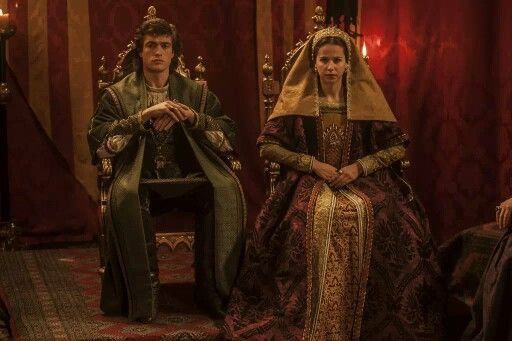
Like I previously said in my last thread, In 1501, Philip of Burgundy and Juana of Castile became the heirs of the kingdoms of Castile and Aragon. This new status required them to appear in constitutional ceremonies in the principal cities of Spain and before the ‘Cortes’ to witness the swearing of oaths to them ùas heirs.
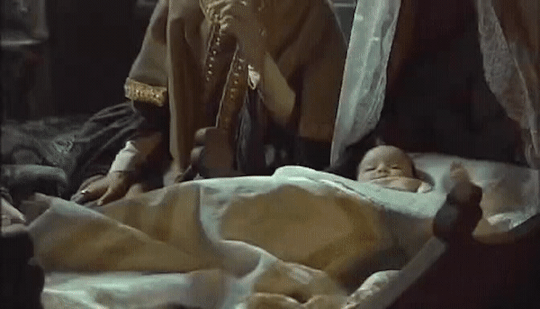

The route they would take was the subject of controversy. Juana’s parents, Ferdinand and Isabella, were insisting they take a sea voyage from Flanders to Spain. A new Spanish envoy, Juan Rodríguez de Fonseca, bishop of Córdoba, reported that:
Juana seemed eager to serve her parents and was widely thought to be “very sensible (cuerda) and very level-headed (asentada).
Philip’s advisors stipulated an overland route through France. The matter was settled in August 1501 when Philip agreed to marry his son Charles to Claude, the eldest daughter of King Louis XII of France and his queen, Anne of Brittany. Philip expressed an interest in meeting his prospective daughter-in-law, and when King Louis heard this, he invited Philip and Juana to visit the French royal court at Blois on their way to Spain.
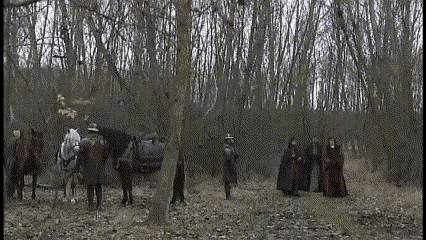
The children were placed with Margaret of York and Anne of Burgundy in Mechelen, and Philip signed new household ordinances for the journey.
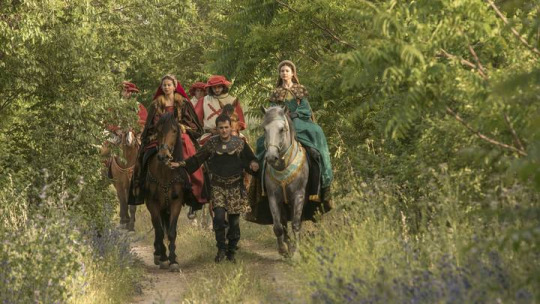
There are several vivid accounts of the journey. The princes left Brussels on 4 November 1501, travelling until Mons with Margaret of York and down through France to Blois. Philip delighted in detours, but Juana, more aloof and withdrawn, preferred the straighter route.
Queen Anne sent Madame de Vendôme along with fourteen women to wait on Juana while she travelled from one town to the next. Juana made an official entry into Valenciennes on November 9 where she was given two silver pots and a bowl covered with flowers of gold by the inhabitants.

Philip and Juana made their official entry into France on November 16 where they were met with immense receptions. They arrived in Paris where a grand banquet was given for the couple that included engaging maidens, drink, spices, sweets, and dancing. Juana left after one night to make her way to the castle of Blois. Philip stayed in Paris four more days before joining her.

They arrived at Blois together on December 7, where they were housed in a newly built section of the palace which had been richly tapestried and furnished just for their visit. Philip went to meet King Louis with his retinue, accompanied by Pierre de Beaujeu, the Duke of Bourbon. He entered the king’s presence and bent down on his knee three times as he neared. Louis rose and doffed his cap at each bow, advancing and embracing Philip. The heir to the French throne, Francois d’Angouleme was seven years old, and he came forward to receive a kiss from Philip. It was Francois’ first appearance at a grand court occasion.
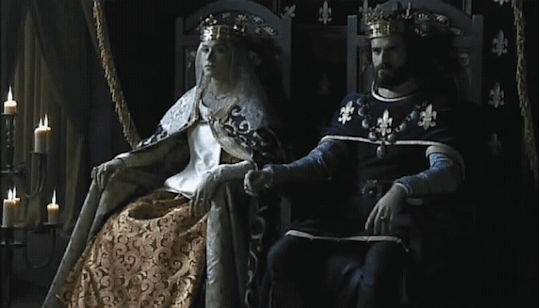

Juana was particularly intent on maintaining her status as the heir to the Spanish throne without offending her hosts. She was asked if she would kiss the King of France and would only agree after consulting her minister, the Bishop of Córdoba. The Bishop agreed a kiss was acceptable. Louis had insisted that Philip bow three times to him, but when Juana arrived, he rushed over to her, preventing her from curtseying twice.

The good-natured Louis then released her, courteously asking her to go to his wife, so the men could be alone together. Juana began making her way to the door where the Duchess of Bourbon was waiting for her to arrange her dress and take her to the Queen, but there was a crush of people preventing her from reaching the door. Then Philip came and pressed his way ahead of his wife, making the crowd even bigger and more raucous, causing further delay.
The rest of the journey will be posted in the next thread: Part 6.1.
5 notes
·
View notes
Text
Anne of Austria (1601-1666) and her two children, the future Louis XIV, and Philippe, Cardinal Mazarin: Former Chief minister of France & François de Bourbon-Vendôme, son of César de Bourbon-Vendôme and Françoise de Lorraine, is a grandson of Henri IV. He is the first cousin of King Louis XIV. He remains single and dies without issue.
Louis XIV
King of France

Louis XIV, also known as Louis the Great or the Sun King, was King of France from 1643 until his death in 1715. His verified reign of 72 years and 110 days is the longest of any sovereign.
Born: September 5, 1638, Château de Saint-Germain-en-Laye, Saint-Germain-en-Laye
Died: September 1, 1715, Palace of Versailles, Versailles
Spouse: Françoise d'Aubigné, Marquise de Maintenon (m. 1683–1715), Maria Theresa of Spain (m. 1660–1683)
Children: Louis, Grand Dauphin, Louis Auguste, Duke of Maine, MORE
Grandchildren: Philip V of Spain, Louis, Duke of Burgundy, MORE
Parents: Louis XIII, Anne of Austria
Nicknames: Louis the Great, Sun King
Anne of Austria
Queen of Navarre

Anne of Austria was an infanta of Spain who became Queen of France as the wife of King Louis XIII from their marriage in 1615 until Louis XIII died in 1643. She was also Queen of Navarre until that kingdom was annexed into the French crown in 1620.
Born: September 22, 1601, Valladolid, Spain
Died: January 20, 1666, Val-de-Grâce Hospital, Paris
Grandchildren: Louis, Grand Dauphin, MORE
Children: Louis XIV, Philippe I, Duke of Orléans
Spouse: Louis XIII (m. 1615–1643)
Siblings: Philip IV of Spain, Maria Anna of Spain
Parents: Philip III of Spain, Margaret of Austria, Queen of Spain
Philippe I, Duke of Orléans
Brother of Louis XIV.

Monsieur Philippe I, Duke of Orléans, was the younger son of King Louis XIII of France and his wife, Anne of Austria. His elder brother was the "Sun King", Louis XIV. Styled Duke of Anjou from birth, Philippe became Duke of Orléans upon the death of his uncle Gaston in 1660.
Born: September 21, 1640, Château de Saint-Germain-en-Laye, Saint-Germain-en-Laye
Died: June 9, 1701, Parc St cloud, Saint-Cloud
Children: Philippe II, Duke of Orléans, Marie Louise d'Orléans, MORE
Great grandchildren: Louis XV, Marie Antoinette, MORE
Spouse: Elizabeth Charlotte, Madame Palatine (m. 1671–1701), Henrietta of England (m. 1661)
Siblings: Louis XIV
Grandchildren: Marie Adélaïde of Savoy, Louis, Duke of Orléans, MORE
Cardinal Mazarin
Former Chief minister of France

Jules Cardinal Mazarin, born Giulio Raimondo Mazzarino or Mazarini, was an Italian cardinal, diplomat and politician who served as the chief minister to the Kings of France Louis XIII and Louis XIV from 1642 to his death. In 1654, he acquired the title Duke of Mayenne and in 1659 that of 1st Duke of Rethel and Nevers.
Born: July 14, 1602, Pescina, Italy
Died: March 9, 1661, Vincennes
Nationality: French, Italian
Place of burial: Collège des Quatre-Nations, Paris
Full name: Giulio Raimondo Mazzarino
Siblings: Girolama Mazzarini, Michele Mazzarino
Organization founded: Académie royale de peinture et de sculpture
François de Vendôme, duc de Beaufort
Cousin of King Louis XIV

François de Vendôme, duc de Beaufort was the son of César, Duke of Vendôme, and Françoise de Lorraine. He was a prominent figure in the Fronde, and later went on to fight in the Mediterranean.
Born: January 16, 1616, Coucy Castle, Coucy-le-Château-Auffrique
Died: June 25, 1669, Heraklion, Greece
Great-grandparents: Antoine of Navarre, Jeanne d'Albret, MORE
Grandparents: Henry IV of France, Gabrielle d'Estrées, MORE
Parents: César, Duke of Vendôme, Françoise of Lorraine, Duchess of Vendôme
Uncle: Louis XIII

Louis, Anne, Philippe, Mazarin, Beaufort, and most importantly, Pistache
2K notes
·
View notes
Text
Niche posting time because I finished reading Alison Weir's book on the Queens of the Age of Chivalry (Edward I's second wife Margaret of France; Edward II's wife, Isabella of France; Edward III's wife Philippa of Hainault; Richard II's wives Anne of Bohemia and Isabella of Valois) which aside from making me go 'oh no did I seriously ready book three before one and two' is making me froth at the mouth at the refusal of period drama makers to engage with English material that isn't Tudor (or Victorian) adjacent.
Like. Okay.
I want more period dramas about Edward III and Philippa dammit. I want that boy watch his dysfunctional parents and a legacy of Plantagenets having absolutely shit relationships with their parents and children and going 'couldn't be me' and proceeding to be so head over heels for his wife and have so many babies - all of which loved him right back! Heck, they adopted even more babies as the twelve Philippa popped out clearly wasn't enough, she needs those nieces near her too. More babies. That woman - that girl - saw what a mess she was marrying into a knew what these people needed was nothing less than love and she spent the rest of her life giving nothing but love, and in a society where Queens had to fulfil very specific roles she managed to go through life as the most adored woman in the entire country. And she did it as a foreigner which the notoriously xenophobic English were never kind to.
I want their wedding in York Minster when they're just fourteen/sixteen and there's a snowstorm falling through the unfinished roof ("Phil do you want milk with your hot water"). I want that silly romantic story that Philippa used to tell people that when Edward was in Hainault he chose her above her sisters (never-mind one was a toddler). I want Edward's letters calling her dear heart I want him fighting with his mum to ensure Philippa gets what's she's owed I want that dry comment that the two spent so much on fabric and jewels that one chronicler wrote "King Edward and Queen Philippa, who first invented clothes".
I want that moment where at a joust her stand collapses whilst Edward is riding and even though she was totally fine just a bit winded (never mind the people underneath her gulp) Edward is completely willing to go head chopping because hoo boy what if she actually was hurt right? I want Philippa again and again going 'please don't kill these people', and Edward playing along with the theatre of it all and going 'okay', knowing it makes Philippa look like a compassionate wonderful queen and he as a strong king without having to actually go murdering (though he still did plenty of that)
I want Philippa kicking David II of Scotland so hard in the balls whilst Edward is in France that David just kind of ends up living in England for the next decade, coincidently freeing Edward's sister (who Edward had never wanted to sell to Scotland and David in the first place as that was something his mother had arranged) and letting her come home and see her mother again.
I want that moment when Philippa falls from her horse and smashes her shoulder, never to recover, and to spend the next ten years slowly dying. I want Edward's sharp decline when she does go, broken and taken advantage of, remembering his promise that Philippa said when his time came he had to be buried with her.
Like, there's this fab European miniseries about Mary of Burgundy (or rather its about her husband Maximilian) and yes she too fell off her horse and was crushed and the way the series shot it and shows her death is harrowing and I want that for myself.
0 notes
Text
What is the Best Australian Wine for You
Australia is a wine powerhouse. We’re talking about the fifth-largest wine-producing country in the world! Australia is home to a talented community of winemakers championing all wine styles, from rosé wine to sweet wine and everything in between.
Australia produces a vast amount of fine wine, and although picking a nice bottle is easy, finding the right wine for you is a bit more challenging. After all, with so many alternatives, how to choose?
Here’s all you need to know about Australian wine and the grapes used to make it, from the robust Australian red wine made with Shiraz to the gentle Pinot Noir. Let’s find the right wine for you.
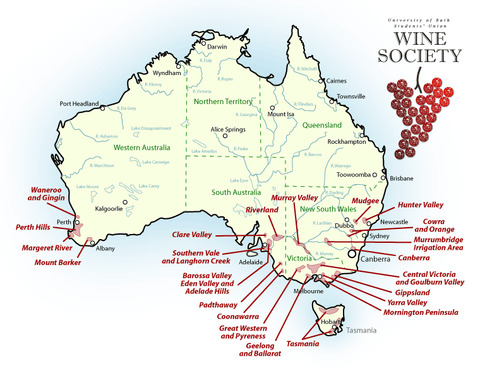
Australia’s Wine Regions
To understand Australian wine, one must first know how the 2156 wineries and 6000 grape growers are organized and how they label their wines.
Australia has a sophisticated yet straightforward appellation system. You’ll find distinct Geographical Indications (GI) under the umbrella term Wine Australia all along the country’s southern shore.
Vineyards run along Queensland’s southern shore, New South Wales, Victoria, South Australia and Western Australia — grapes grow merrily in Tasmania as well! There are around 65 GIs in Australia, and they all focus on different wine styles depending on their climates, soil types and proximity to the sea.
To find the right Australian wine for you, let’s explore the most famous wine grapes where they are grown. Here’s a quick tour through Australia’s verdant vineyards. Our first stop? Australian white wine.
Australian White Wine
Chardonnay
Chardonnay is Australia’s most planted white varietal and the third most important after the red Cabernet Sauvignon and Shiraz. Chardonnay is a noble grape. The queen of white grapes is native to Burgundy, France, but arrived in Australia in 1832. Winemakers love the grape for a reason — it thrives almost everywhere.
Of course, Chardonnay vines prefer colder climates, so you’ll find the finest Australian white wines made with the grape up on the hills or near the coast, where temperatures are lower.
Expect a tight acidic backbone and scents reminiscent of golden apples, white flowers, citrus peels and oaky vanilla over a medium-bodied and creamy palate. These wines are best enjoyed with pasta, creamy sauces, chicken thighs and savoury pastries.
Regions for Australian Chardonnay:
Margaret River, Adelaide Hills, Yarra Valley, Mornington Peninsula, Tasmania.
Wine to try:
Allandale Chardonnay 2021
Sauvignon Blanc
Sauvignon Blanc is the fifth most planted grape in Australia, and it’s often blended with Semillon, a style inspired by the white wines from Bordeaux. By the way, Semillon alone makes extraordinary wine in Australia as well, primarily in Hinter Valley.
Unlike Sauvignon’s European versions, these wines are brimming with tropical fruit redolent of passion fruit, lychee and kiwi, always with refreshing acidity. Enjoy Sauvignon Blanc with fresh cheese and seafood. For dry white wine, Australian white wine has you covered.
Regions for Australian Sauvignon Blanc:
Margaret River, Yarra Valley, Tasmania, Tumbarumba (Check the Sauv Blancs from neighbouring New Zealand as well!)
Wine to try:
Stella Bella Sauvignon Blanc 2021
Riesling
Riesling is the queen of cold-climate white grapes; it's easy to see why it thrives in Germany and Austria. Well, Australian grape growers have found great spots for growing the late-ripening and aromatic variety as well. The result is an elegant wine with floral and petrol aromas, often with hints of ripe peaches and mango. The sweetness in these wines may vary, so read the label carefully.
Riesling is particularly compatible with white meat, including pork and veal. It can be a great partner for spicy food like curries, too. Riesling is a wonderful summer sipper, and it’s easy to enjoy on its own as well.
Regions for Australian Riesling:
Clare Valley, Eden Valley, Tasmania, Western Australia.
Wine to try:
Pooley Butchers Hill Riesling 2021
Other Australian White Grapes
Many other white varietals show promising results in Australia, including Vermentino, Pinot Gris, Fiano, Muscat and others.
Australian Red Wine
Although Australian white wines are up there with the best in the world, the country is best known for its reds. Cabernet Sauvignon and Syrah are the two most planted grapes in Australia and make almost half of the vineyards. Both grapes arrived in the country in the 1830s at the hands of the “Father of Wine Australia”, James Busby. Today, producers make the most acclaimed wines in the country with one of these two grapes, but there are others. Let’s get to know them.
Shiraz
Shiraz, AKA Syrah, is a red grape from the Rhône Valley, France. The rustic grape produces big and bold red wines with ripe fruit aromas and hints of freshly cracked black pepper and chocolate.
Shiraz is also commonly blended with Grenache and Mataro (Mourvedre) in the now-famous GSM blend, where Grenache plays first fiddle. These wines are complex but approachable and offer a wide range of fruit, herb and spice aromas.
Australian Shiraz is best enjoyed with hearty stews, meat pies, grilled red meat, barbecue, roasts, goat and lamb.
Regions for Australian Shiraz:
Barossa Valley, Margaret River, Hunter Valley, Clare Valley, McLaren Vale.
Wine to try:
Turon Artist Range Syrah 2019
Cabernet Sauvignon
Cabernet Sauvignon is the most planted grape globally and the second most popular in Australia. There’s no doubt the noble Bordelaise varietal produces age-worthy and structured wines across the country. You can find wines made 100% with Cabernet Sauvignon everywhere and spectacular blends, most likely Cabernet-Merlot and Cabernet-Shiraz.
Cabernet Sauvignon wines are an excellent match for thick, fatty steaks, especially rib eyes and strip steaks. Cabernet will also shine with meaty stews, casseroles and semi-hard cheese.
Regions for Australian Cabernet Sauvignon:
Coonawarra, Barossa Valley, Margaret River, Victoria.
Wine to try:
Suckfizzle Cabernet Sauvignon 2018
Pinot Noir
Pinot Noir is not amongst the most planted red grapes in Australia, not because producers don’t want to grow it, but because the thin-skinned Burgundian grape is tough to grow and only thrives in the coldest climates.
Pinot Noir produces elegant, almost silky red wines with elevated acidity and fruit purity on the nose and palate. These sensual wines pair best with mushroom dishes, oily fish like salmon and tuna, and roasted poultry. Pinot Noir is also often used to make pretty rosé wine.
Regions for Australian Pinot Noir:
Mornington Peninsula, Yarra Valley, Tasmania, Adelaide Hills.
Wine to try:
Quartier Pinot Noir 2021
Other Australian Red Grapes
There are dozens of other red grapes in Australia, although not nearly as popular as those described above. Tempranillo is worthy of a special mention, and it’s doing great in Adelaide Hills, McLaren Vale, Heathcote and Margaret River.
Merlot, Barbera, Cabernet Franc, Petit Sirah (Durif) and many other grapes are worth seeking out, and they’re climbing the popularity ranks at an impressive pace.
There’s an Australian Wine For You
We’ve covered the most prominent red and white varietals in the Australian repertoire and where to find them. However, this is just a drop in the bucket — there’s much more from where these came from!
From world-class sparkling wine to lusciously sweet wine, Australian winemakers make wine for all occasions, food pairings and budgets. What’s the best Australian wine? That’s up to you. And you’ll have a great time finding the answer to that question.
Enjoy the wine Australia has for you and share it with friends and family. Australian wine is better than ever, and it’s not going anywhere. Are you ready to explore the vast country through your taste buds? All you need is a wine glass!
0 notes
Text






icons of Clementine Nicholson in Knightfall (s2) as Queen Margaret
more icons right here
#clementine nicholson icons#knightfalledit#knightfall#clementinenicholsonedit#clementine nicholson#margaret of burgundy#queen margaret#margaret of burgundy queen of france#marguerite de bourgogne#icons#*icons#*mine
34 notes
·
View notes
Text
Ages of French Queens at First Marriage
I have only included women whose birth dates and dates of marriage are known within at least 1-2 years, therefore, this is not a comprehensive list.
This list is composed of Queens of France until the end of the House of Bourbon; it does not include Bourbon claimants or descendants after 1792.
The average age at first marriage among these women was 20.
Ermentrude of Orléans, first wife of Charles the Bald: age 19 when she married Charles in 842 CE
Richilde of Provence, second wife of Charles the Bald: age 25 when she married Charles in 870 CE
Richardis of Swabia, wife of Charles the Fat: age 22 when she married Charles in 862 CE
Théodrate of Troyes, wife of Odo: age 14 or 15 when she married Odo in 882 or 883 CE
Frederuna, wife of Charles III: age 20 when she married Charles in 907 CE
Beatrice of Vermandois, second wife of Robert I: age 10 when she married Robert in 990 CE
Emma of France, wife of Rudolph: age 27 when she married Rudolph in 921 CE
Gerberga of Saxony, wife of Gilbert, Duke of Lorraine, and later of Louis IV: age 16 when she married Gilbert in 929 CE
Emma of Italy, wife of Lothair: age 17 when she married Lothair in 965 CE
Adelaide-Blanche of Anjou, wife of Stephen, Viscount of Gévaudan, Raymond III, Count of Toulouse, and later Louis V: age 15 when she married Stephen in 955 CE
Bertha of Burgundy, wife of Odo I, Count of Blois, and later Robert II: age 19 when she married Odo in 984 CE
Constance of Arles, third wife of Robert II: age 17 when she married Robert in 1003 CE
Anne of Kiev, wife of Henry I: age 21 when she married Henry in 1051 CE
Bertha of Holland, first wife of Philip I: age 17 when she married Philip in 1072 CE
Bertrade of Montfort, wife of Fulk IV, Count of Anjou, and second wife of Philip I: age 19 when she married Fulk in 1089 CE
Adelaide of Maurienne, second wife of Louis VI: age 23 when she married Louis in 1115 CE
Eleanor of Aquitaine, first wife of Louis VII and later Henry II of England: age 15 when she married Louis in 1137 CE
Adela of Champagne, third wife of Louis VII: age 20 when she married Louis in `1160 CE
Isabella of Hainault, first wife of Philip II: age 10 when she married Philip in 1180 CE
Ingeborg of Denmark, second wife of Philip II: age 19 when she married Philip in 1193 CE
Agnes of Merania, third wife of Philip II: age 21 when she married Philip in 1195 CE
Blanche of Castile, wife of Louis VIII: age 12 when she married Louis in 1200 CE
Margaret of Provence, wife of Louis IX: age 13 when she married Louis in 1234 CE
Isabella of Aragon, first wife of Philip III: age 14 when she married Philip in 1262 CE
Marie of Brabant, second wife of Philip III: age 20 when she married Philip in 1274 CE
Joan I of Navarre, wife of Philip IV: age 11 when she married Philip in 1284 CE
Margaret of Burgundy, wife of Louis X; age 15 when she married Louis in 1305 CE
Clementia of Hungary, second wife of Louis X: age 22 when she married Louis in 1315 CE
Joan II, Countess of Burgundy, wife of Philip V: age 15 when she married Philip in 1307 CE
Blanche of Burgundy, first wife of Charles IV: age 12 when she married Charles in 1308 CE
Marie of Luxembourg, second wife of Charles IV: age 18 when she married Charles in 1322 CE
Joan of Évreux, third wife of Charles IV: age 14 when she married Charles in 1324 CE
Bonne of Luxembourg, first wife of John II: age 17 when she married John in 1332 CE
Joan I, Countess of Auvergne, wife of Philip of Burgundy, and later John II: age 12 when she married Philip in 1338 CE
Joanna of Bourbon, wife of Charles V: age 12 when she married Charles in 1350 CE
Isabeau of Bavaria, wife of Charles VI: age 15 when she married Charles in 1385 CE
Marie of Anjou, wife of Charles VII: age 18 when she married Charles in 1422 CE
Charlotte of Savoy, second wife of Louis XI: age 9 when she married Louis in 1451 CE
Anne of Brittany, wife of Maximilian I, HRE, Charles VIII and later Louis XII: age 13 when she married Maximilian in 1490 CE
Joan of France, first wife of Louis XII: age 12 when she married Louis in 1476 CE
Mary Tudor, third wife of Louis XII: age 18 when she married Louis in 1514 CE
Claude of France, first wife of Francis I: age 15 when she married Francis in 1514 CE
Eleanor of Austria, wife of Manuel I of Portugal and later second wife of Francis I: age 20 when she married Manuel in 1518 CE
Catherine de' Medici, wife of Henry II: age 14 when she married Henry in 1533 CE
Mary, Queen of Scots, wife of Francis II: age 16 when she married Francis in 1558 CE
Elisabeth of Austria, wife of Charles IX: age 16 when she married Charles in 1570 CE
Louise of Lorraine, wife of Henry III: age 22 when she married Henry in 1575 CE
Margaret of Valois, first wife of Henry IV: age 19 when she married Henry in 1572 CE
Marie de' Medici, second wife of Henry IV: age 25 when she married Henry in 1600 CE
Anne of Austria, wife of Louis XIII: age 14 when she married Louis in 1615 CE
Maria Theresa of Spain, wife of Louis XIV: age 22 when she married Louis in 1660 CE
Marie Leszczyńska, wife of Louis XV: age 22 when she married Louis in 1725 CE
Marie Antoinette, wife of Louis XVI: age 15 when she married Louis in 1770 CE
38 notes
·
View notes
Photo










Knightfall | Blood Drenched Stone
#knightfall#knightfalledit#perioddramaedit#knights templar#tom cullen#the holy grail#easily persuade by aesthetics#Landry aka naughty Galahad#isabella of france#philip iv of france#margaret of burgundy queen of france#tancrede#gwain#sister anne#mine#historical face puppets
135 notes
·
View notes